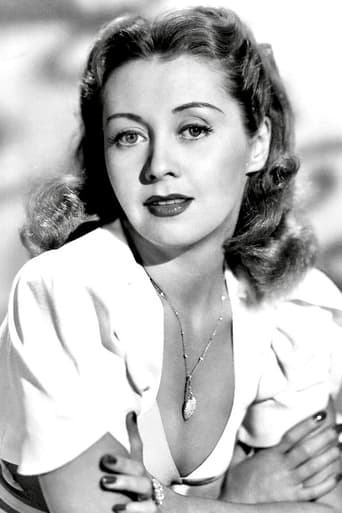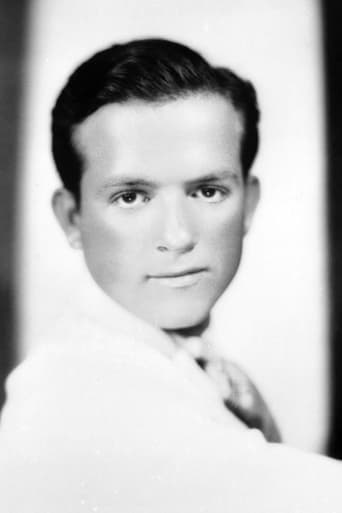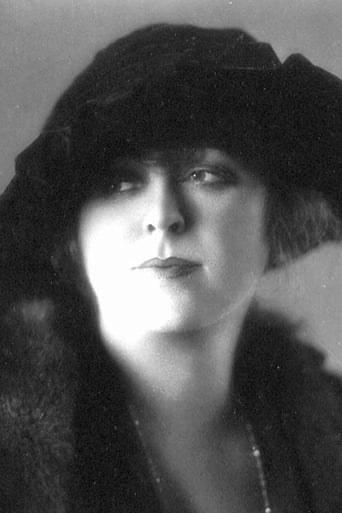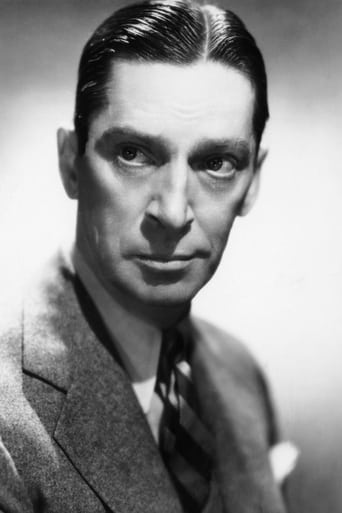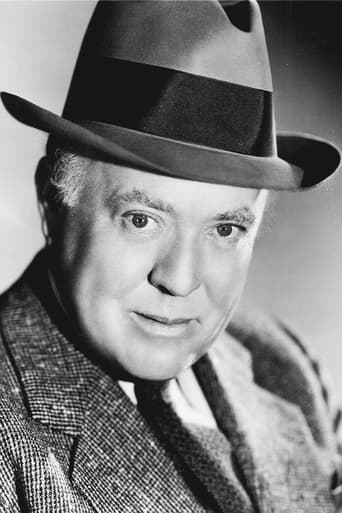MartinHafer
This film begins with Bud Reeves (Eric Linden) leaving his small home town for a life in New York City. The fast pace of the city is then lampooned in a montage sequence. Yep, the 'big city' certainly is fast...and Reeves is a total boob. This becomes apparent when his cousin (Walter Catlett) preys upon him. Anyone with a dozen functioning brain cells would immediately recognize him as a con man, but dumb ohttp://www.imdb.com/title/tt0022676/usercomments-enterld Reeves lets the guy rob him blind. How can anyone be THAT stupid?! In fact, the Reeves character was awfully broadly written with his "aw, shucks" attitude and wide-eyed innocence. Frankly, he was annoying and completely unrealistic--and this seriously impacted the quality of the film.When the guests to a party that his cousin puts on (despite Reeves paying for EVERYTHING), you may notice Shep--Humphrey Bogart in his first role with Warner Brothers, though he does not receive screen credit. In addition to Bogart, familiar Warner players Joan Blondell, Guy Kibbee and Ned Sparks are in attendance.Lyle Talbot, like Bogart, is uncredited in a small scene--and the two of them get involved in a dandy brawl. Then, when the lights go out you hear a scream. When the fight is over and the lights return, a young girl is dead and everyone scrams. Wow..that Reeves is an idiot--and the cops suspect HE did it! And, instead of going to the police, the idiot tries to leave New York. What a moron!! If you haven't noticed, I have called Reeves 'moron' many times and even for a B-film this is a terribly written character. This certainly didn't help Eric Linden's career, though the stink of this film didn't seem to hurt Blondell or Bogart. It is quite bad, but not bad enough to be anything more than a small speed bump in their careers.Overall, in insignificant and dumb film--and my nominee for the broadest morality tale written in the 1930s. The only people who may want to see it are Bogart fans--otherwise, beware--it's just not worth an hour of your life.
bkoganbing
Humphrey Bogart's first appearance in Warner Brothers picture was in a small featured role in Big City Blues which starred Eric Linden and Joan Blondell. It's the story of a young kid from Hoopersville, Indiana who comes to the New York City to seek fame and fortune and gets a great deal less than he bargained for.Linden plays our young man fresh off the farm and the first Linden does is look up cousin Walter Catlett who is playing the usual Walter Catlett sharpie. I do love the way Catlett keeps opening his wallet and to his amazement can't seem to find any money there. He latches on to Linden the way a political 'consultant' latches on to a spendthrift candidate.Of course Linden's arrival in the Big Apple is cause for a party which means bootleg booze, chorus girls, and some dance music. Catlett takes the liberty and Linden's money and room to throw a party so Eric can presumably meet some of the 'important' people Catlett knows. Among the guests are Joan Blondell and a bevy of her chorus girl friends.But things go terribly wrong and one of the girls, Josephine Dunn, winds up dead. When that happens the guests scatter with Catlett the first out the door and Blondell the last, leaving poor Linden holding the bag. Of course Linden panics and spends the next day a fugitive looking for Blondell.Mervyn LeRoy directs Big City Blues at a sprightly pace and when you've got players like Blondell, Bogey, Catlett, and most of all Guy Kibbee playing an oaf of a house detective you know the film will be entertaining. In fact down the cast list you've got Herman Bing as a waiter, Lyle Talbot as another party guest, J. Carrol Naish as the supplying bootlegger, and Dennis O'Keefe in a small bit in a crap game and more besides, you're in for a real treat if you're like me, a big fan of the days when all these faces ruled films. Dick Powell is heard only as a radio announcer.Kibbee by the way turns out to be the hero of the film, but you have to see it to see how he accomplishes that. And of course you have to see what happens to naive young Eric Linden.Some nice blue cracks in this before the Code film pepper Big City Blues throughout the running time. Although one very big screen legend was in the cast, the film is actually a real salute to some of the great character players the movies ever had.
lugonian
BIG CITY BLUES (Warner Brothers, 1932), directed by Mervyn LeRoy, is a Depression era melodrama without the focus on the unemployed in breadlines or the homeless struggling to survive, but a cliché story about the survival of a country boy who ventures to the big city, the "Big Apple," better known as New York. Starring Joan Blondell, her role is actually secondary but crucial to the plot, while the Eric Linden, whose name comes below hers, is the central focus.The story revolves around Buddy Reeves (Eric Linden), a naive country boy from Hoopersville, Indiana. After inheriting $1100, he decides to fulfill his dream by coming to live in the greatest city in the world, New York. Unable to take his dog, Duke, with him, Buddy offers the pooch to a Willow Junction station master (Grant Mitchell), who accepts the animal only as a loan, knowing full well, that he will do exactly what he did as a youth, by venturing to the big city only to return home disillusioned. However, Buddy believes different, especially since he only has a one way ticket. Upon his arrival at Grand Central Station, Buddy, as he carries his suitcases, strolls down with amazement the busy streets surrounded by the "rush, tension and crowds." He registers at the Hotel Hercules, room 3663, where his Cousin Gibbony (Walter Catlett) enters the scene to teach him the ropes in becoming a true New Yorker as well as fast-talking his way in acquiring some of his money. Gibbony, a comedic con-artist who claims to know the most important people in town, ranging from Mayor Jimmy Walker to actress Constance Bennett, arranges for the young lad to be introduced to a handful of his friends by having an all night party to take place in Buddy's hotel room. That evening, Buddy becomes infatuated with an attractive show girl named Vida Fleet (Joan Blondell). During this very active party, which consists of radio background music to current hit tunes as "My baby Just Cares for Me," Lem Sully (Lyle Talbot), actor and drunk, along with globetrotter Shep Atkins (Humphrey Bogart) get into an argument over the drunken Jackie DeVoe (Josephine Dunn), a Follies girl. A physical fight ensues, leading to a whiskey bottle being thrown across the room, hitting the head of Jackie, causing her death. Suddenly the room is quiet. All the guests make a hasty departure, especially Vida, leaving Buddy to be faced with a possible murder charge. Breaking away as Hummell, the house detective (Guy Kibbee) enters to discover the body, Buddy hides amongst the crowded city, hoping to avoid being arrested by Quelkin (Thomas Jackson) of the homicide squad, who is hot on his trail.Others in the cast consist of Inez Courtney as Faun; Ned Sparks as Stackhouse; Jobyna Howland (in her Marjorie Rambeau-type performance) as Mrs. Cartlidge, the 55 Club speakeasy "madame", along with interesting assortment of notable actors assuming no screen credit, including Josephine Dunn (Al Jolson's co-star in 1928's THE SINGING FOOL); J. Carroll Naish as a bootlegger; Herman Bing as a German waiter; Clarence Muse as the black singing waiter vocalizing "Every Day Can Be a Sunday"; and the heard but not seen Dick Powell as the radio announcer advertising Yum Yum Popcorn.Eric Linden is ideally cast as naive but vulnerable young lad, along with Blondell in her usual street smart, tough but loyal girlfriend performance. They would be reunited once more in race-car drama, THE CROWD ROARS (1932) starring James Cagney. Of the supporting players, it is Walter Catlett sporting glasses, derby and cigar (a cross between comedians Groucho Marx and Robert Woolsey), the scene stealer who livens things up.With so much happening during its brisk and brief 65 minutes, BIG CITY BLUES moves as quickly as any speeding cars or pedestrians depicted on screen. Along with other then current New York sounding film titles, MANHATTAN PARADE (1931), CENTRAL PARK (1932), 42nd STREET (1933), just to name a few, no other movie studio like Warners captures the feel and essence of New York City life, and BIG CITY BLUES is no exception. Not as well known as the more famous New York movies of this period, it's worth catching whenever presented during the late night hours on Turner Classic Movies.(**1/2)
